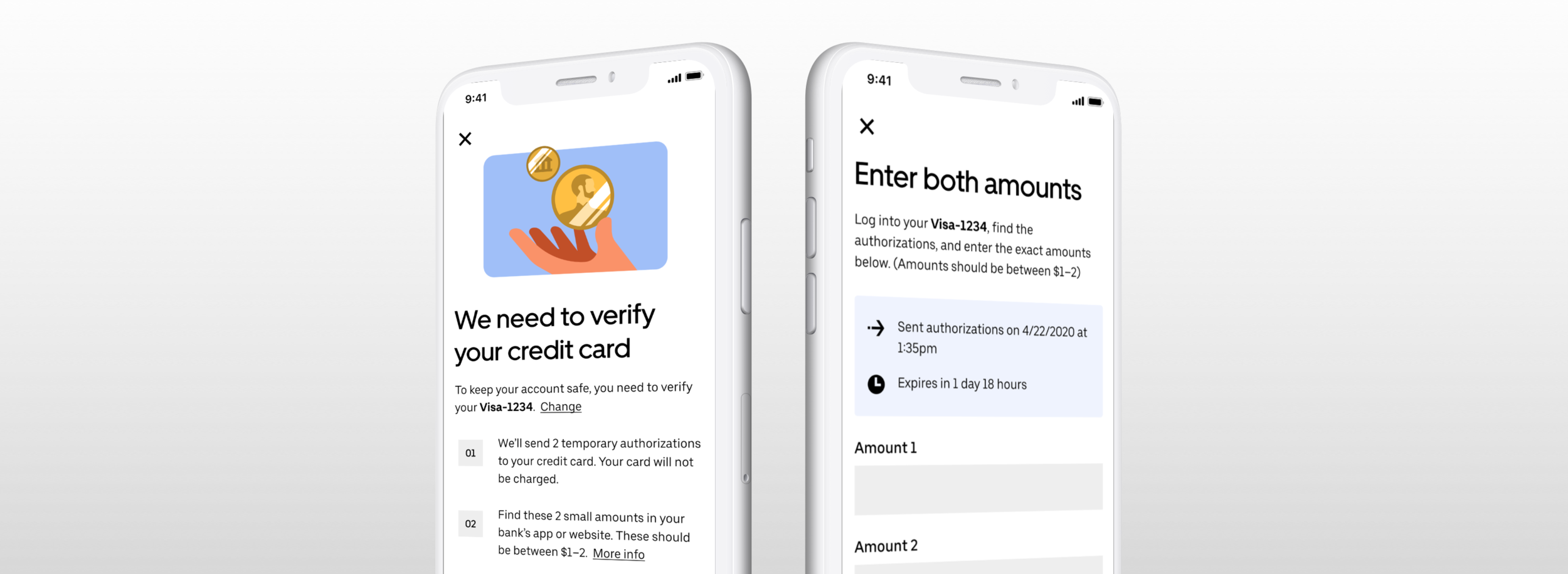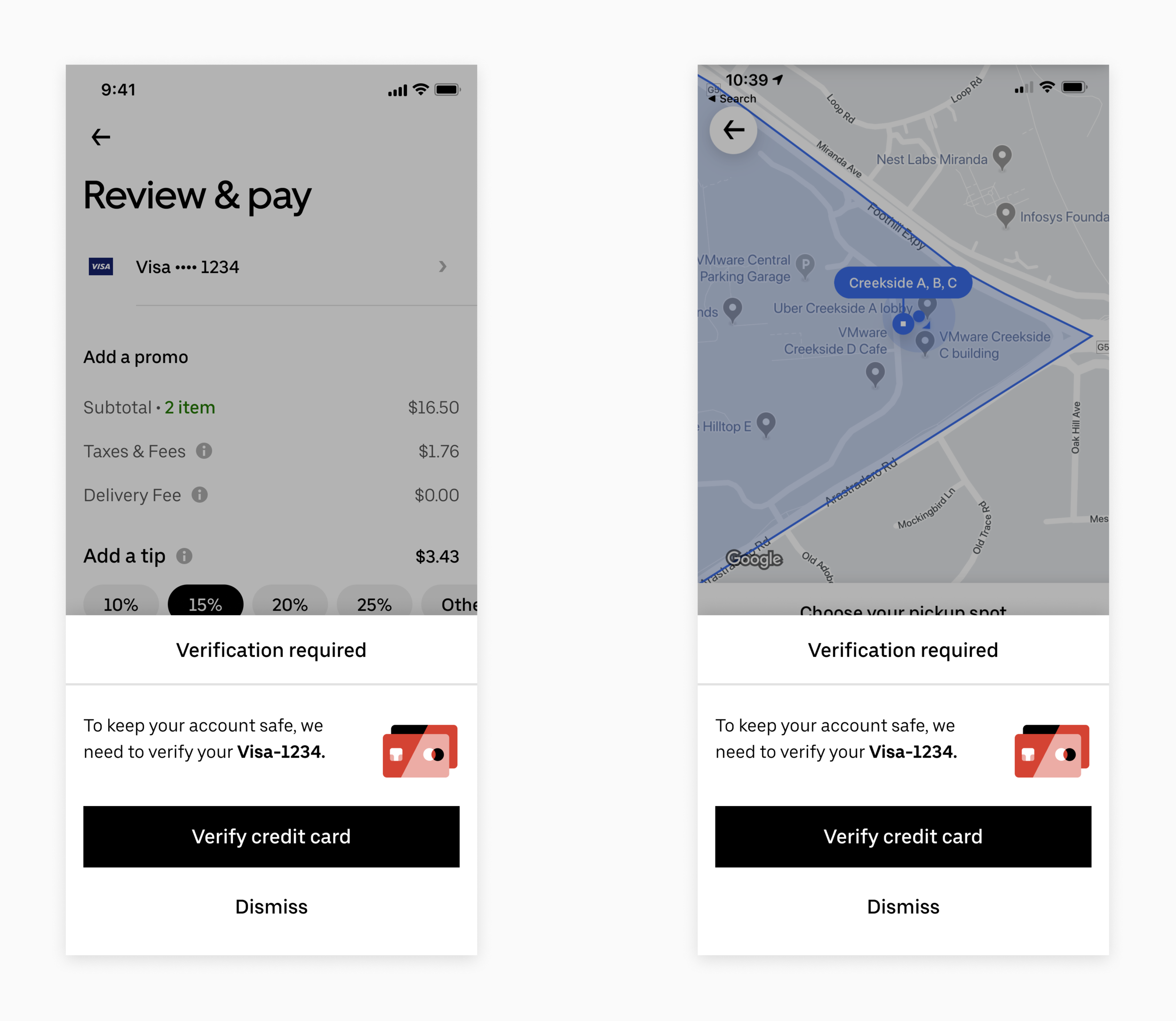PENNY AUTHORIZATION verification
UBER
User Experience | Product Design | Visual Design | Product Management | Project Management
Uber offers vehicles for hire, food delivery (Uber Eats), package delivery, couriers, freight transportation, and, through a partnership with Lime, electric bicycle and motorized scooter rental. Uber operates in over 900 metropolitan areas worldwide. It is one of the largest providers in the gig economy and is also a pioneer in the development of self-driving cars.
Summary…
Penny Auth allows users with banned credit/debit cards to verify their payment method and self-resolve without having to contact customer support.
the problem…
There’s a small percentage of false positives when banning riders/eaters with automated fraud rules.
When good users get banned, customer service is the only channel for resolution, which is usually not an ideal user experience. In addition, sometimes the customer service agent has a difficult time identifying users as fraudsters or not based on the existing information currently in the Uber systems.
the hypothesis
We believe that replacing a ban with an option to verify their payment method (via a tough identity challenge) would lead to a significant % of good users staying on the Uber platform and would deter almost all bad actors other than friendly fraudsters.
design principles
Extremely Versatile
By building a Penny Auth challenge that is product and LOB agnostic, we can identify and deliver this challenge — from any product, and any touchpoint — where it applies.
Crystal Clear
Since a key part of this process happens outside of the Uber platform, setting expectations and providing as much guidance as possible is essential to providing a good experience — especially for those regions less familiar with this type of verification.
so what exactly is a penny auth?
Penny Auth is a process of validating a payment method by sending micro-authorizations to the financial institution. The user logs into that financial institution, proving they are authorized, finds the authorizations, and validates the amounts with Uber.
Uber sends 2 small authorizations to the user’s payment method
User logs into their financial institution and finds the amounts
User enters the amounts into the Penny Auth experience to verify their payment method
Trigger PointCheckout / Trip Request
There’s a Risk check that happens during Checkout (EATS), or Trip Request (RIDES). During this Risk Check, we validate many profile elements — one being the validity of the selected payment method.
If the user’s payment method is banned and eligible for verification, we direct the user to the Penny Auth Challenge. (Note: In today’s world, this payment method would be banned and the user would be required to call customer support to unban it.)
Start of the Penny Auth ExperiencePenny Auth launch
When Risk detects a banned payment method, we message the user. They can choose to verify the payment method, or go back to switch/add another payment method.
Landing Page
Context and directions are important to guide the user — especially if this type of experience is new to them.
Start of the Penny Auth ExperienceSend Authorizations
If we need to send authorizations, we prompt the user with an explicit action.
If existing authorizations exist and are valid, we can skip this step and go directly to the Amount Input Form.
We’re calling this step out for many reasons. Since authorizations are valid for 48 hours, being explicit about sending authorizations will give the user more context into when the auths were sent — especially if multiple sets of auths are sent the the user’s financial institution.
Amount Input
This is where the user inputs the amounts found on their financial institution’s statement. Along with brief instructions, we also display the timestamp and expiry of the authorizations. Since we cannot control exactly what happens in the user’s financial institution, this timestamp helps the user identify the set of authorizations.
Success Confirmation!
Yay! The payment method has been verified and is now ready to be used on the Uber platform!













